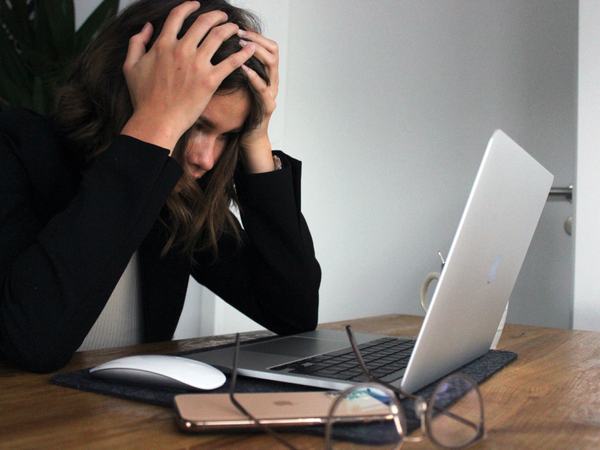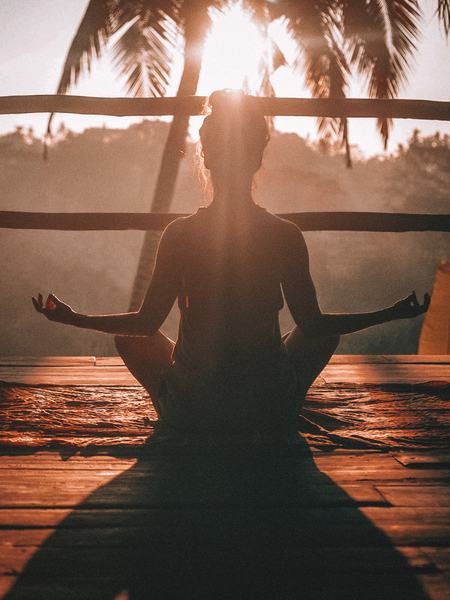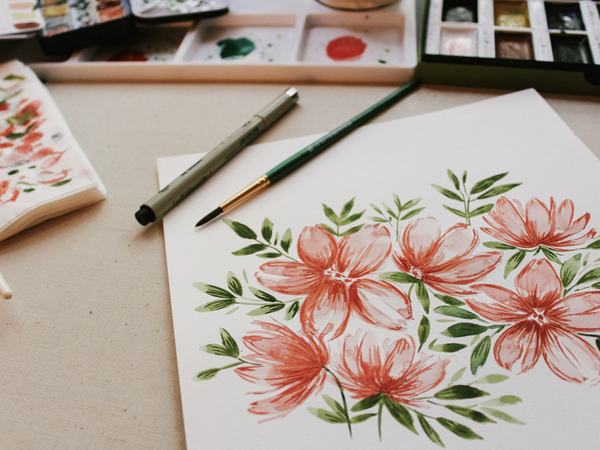Effective methods for stress management
Effective methods for stress management
Do you know the feeling when the day is once again too hectic, you are jumping from appointment to appointment, the body is in high performance mode for too long and you would prefer to simply and quickly refuel energy?
Everyday life, be it through work or private life, likes to provide tension and stress, which unfortunately likes to bring physical symptoms, such as headaches and tension.
In this post, I'd like to show you some simple and effective ways to manage more stress in your everyday life with the help of short and efficient energy breaks.
Where does stress come from?
Basically, the word stress describes a high level of physical or mental strain. It seems that stress-related illnesses are becoming more and more common as globalization increases, the world becomes more fast-paced, and competition is constantly on the rise.

There are a variety of stress-related symptoms, such as irritability, stomach problems, nervousness, sleep problems and many more. The list of possible causes is at least as long. In addition to a lack of time, external factors and excessive demands, which are often due to a lack of organization, the cause of stress can have many other factors.
But cause or no cause - how do I cope with stress? The most important factor, which is at the core of all methods, is to briefly break away from hectic thought processes in order to sort yourself out and continue working with freshness.
The following methods each offer you a different way to achieve this goal and regenerate psychologically.
3 effective methods of stress management that can be easily integrated into everyday life.
1. meditation exercises:
Meditation has been practiced by humans for over 2,500 years and holds scientifically proven benefits. Quieting thoughts helps you create order in your mind and keep a cool head in stressful moments. Through practice, we move away from negative thoughts and build mindfulness.
In the classical method, you direct your attention to a physical sensation and focus on it for a certain time.
The easiest way to do this is in a relaxed position, sitting or lying down, paying attention to your breathing. Take 5-10 minutes, close your eyes and pay attention to the air flowing in and out. Depending on your preference, you can pay attention to a specific area of breathing. This could be, for example, the rising and falling of the abdominal wall, the feeling in the lungs, or even the flow of air in the nose.
An alternative to this meditation exercise is the Body Scan, which is one of the most popular meditation methods.
Again, close your eyes in a relaxed position and work your way through your body from head to toe with a scan. Just notice how each part of your body feels and what you feel when you focus your full attention on individual areas.

Do you feel tension in the areas? How do the clothes that touch your body feel? Do parts of your body feel cold or warm? Feel the touch of your feet on the floor and your body on the chair.
By doing this, you turn your attention from your surroundings and external stimuli to your body, helping it to find inner peace. Afterwards, pay attention to the perception of your entire body as a unit to complete the exercise.
A tip: Exercise also helps against stress and time in the fresh air is also good for us. The combination of meditation and movement brings many benefits.
Walking meditation is an effective and centuries-old form of meditation taught by Buddhist monk Thich Nhat Hanh. It incorporates parts of mindfulness training while walking.
The method represents a variation in which we focus entirely on our breath and the lifting, pushing and putting down of our feet while walking. In this way we distract ourselves from external influencing factors and concentrate on the process of walking.
2. finding peace in relaxing distraction
In addition to classic meditation, you can also take more creative distraction breaks and find regeneration in a subject you enjoy and temporarily free yourself from negative thoughts and distractions.
Maybe you already have a hobby that's super suitable to be inserted in small breaks? This includes repetitive activities, such as knitting or drawing.
One activity that has become increasingly popular in recent years, especially among adults, is coloring. It is calming and also has a creative component. By focusing on fine details and the colors, stressful thoughts can be released and a meditative atmosphere can be created.

Depending on interests and preferences, coloring templates can be selected thematically. Free coloring pictures to print you can find on the website mal-o-mat.de. The advantage here is that you can pause the activity at any time and continue when time suits you again or you need a break.
Another hobby that is becoming more and more popular and easy to practice is yoga. Yoga exercises are an easy way to relax the body, find inner peace and also release tension. Here are two simple exercises that you can do in between workouts at your desk:
Sitting Half Moon: While sitting, raise your arms above your head and clasp your hands. Then bend your upper body a little to the right, breathe a few times. Now bend to the left, breathe again a few times and repeat this exercise 4-5 times.
Stretching your wrists (especially useful if you work at a mouse and keyboard for a long time): Stand in front of your desk, place your palms on the table surfaces so that your fingers protrude slightly above the table. Increase the pressure on the table surface so that you feel it in your wrists as well. Hold this position for up to 30 seconds and lift your hands off the table. This exercise will help you to relieve your wrists after a long effort.
3. create order
It helps us immensely to keep a clear head if the environment as well as in our head is kept in order. A chaotic and disorganized workplace, quickly leads to additional stress. By creating order and structure, you make your daily work easier and build a productive work environment.
It is at least as important to sort out thoughts as well. Multi-tasking worsens efficiency and this also applies to filed thoughts. Writing down tasks, to-do lists and goals is a simple, but particularly effective way to put thoughts on paper in a structured way, not worrying about forgetting them and thus making room for clarity and focus. This allows you to better plan your day and prioritize individual tasks.
Tip: Keep a journal in which you write down before you go to sleep:
- write down which tasks you plan to do the next day
- prioritize which of the tasks are especially important
- write down recurring thoughts that are buzzing in your mind to get them out of your head
- define and write down desires and goals in order to understand the motivation of your work
Conclusion
In this post, I have shown some effective methods for stress management that aim to make a cut in stressful situations with a short break, not to get bogged down and recharge your energy.
It is also important to provide a structured foundation by creating and keeping order. All exercises can be done with little effort and without spending a lot of money and are best integrated into everyday life in the form of a routine. In the end, it is our responsibility to take time for ourselves and take care of our well-being.
Image sources
- Cover image: unsplash.com
- Image 1: unsplash.com
- Image 2: unsplash .com
- Image 3: unsplash .com
No comments yet.